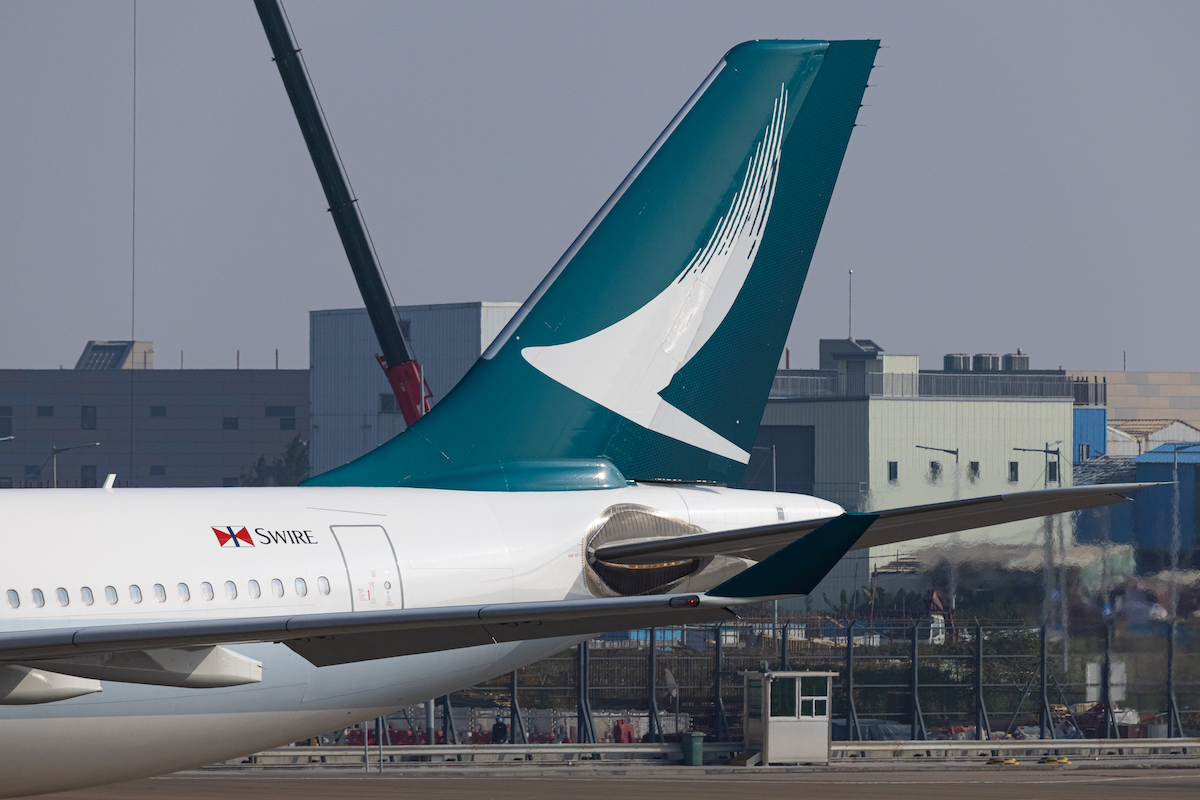Cathay Pacific Pulls Off Strong Profit Recovery From Pandemic Depths

Photo Credit: Flickr / Kevin Chung
In case there was any doubt, Cathay Pacific Airways just made things crystal clear: East Asia’s airlines are roaring back to financial health.
Hong Kong’s largest airline on Wednesday reported exceptionally strong profits for the final six months of 2022 (it reports only semiannually, not quarterly). The company’s operating margin was 15 percent, becoming the latest East Asian airline to report double-digit figures. Singapore Airlines, Korean Air, Japan’s All Nippon, and Thai Airways all did so for their fourth quarters. Cathay’s 15 percent second-half margin, meanwhile, was a vast improvement from the lowly 2 percent it coughed up in the second half of 2019. It was also good enough to propel the company to a full-year 2022 operating profit; its full-year operating margin was 7 percent.
The numbers look even better for just Cathay Pacific’s core airline operation, not including low-cost carrier HK Express, cargo subsidiary Air Hong Kong, or its 18 percent ownership stake in money-losing Air China (the stake recently dropped to 16 percent). In the half-year, the core operation generated 50 percent of its revenues from passengers and the other 50 percent from cargo, collectively earning a muscular 17 percent operating margin. The core airline achieved a 10 percent margin for all of 2022.
“After three years of unprecedented disruption due to the Covid-19 pandemic, we are pleased to now be at the stage where we are rebuilding a new Cathay Pacific,” the company said in a statement.
Things were rough for Cathay even before the pandemic. Its last decent year before 2022 was 2015. It would lose money in both 2016 and 2017, before eking out disappointingly thin profits in 2018 and 2019. Those were years scarred by tough competition, labor tensions, costly hedging mistakes, airport congestion, and — most damagingly — periodic political unrest that at times caused Hong Kong’s airport to close. Once a British colony that achieved significant autonomy after reverting to China’s control in 1997, Hong Kong in recent years has become more firmly under Beijing’s control. That said, the island retains a separate aviation regulator, with its own international air treaties.
As recently as last March, Cathay was barely flying any passengers. It mentioned one specific day — March 12 of last year — when it flew just 58 people. This January, however, it carried more than 1 million, with a load factor of 87 percent. The airline’s cargo business, while an important source of profits during the pandemic, also experienced operational constraints linked to quarantine rules for flight crews.
Quarantines and other restrictions are now in the rearview mirror, and Cathay hopes to return to pre-pandemic levels of passenger capacity by the end of 2024. By the end of this year, it foresees returning to about 70 percent. Beyond 2024, the hope is to grow again, taking advantage of a new third runway at Hong Kong’s airport. Cathay also has orders for Boeing’s new 777-9. It currently flies a mix of current-generation 777s, along with Airbus A350s and A330s (it has Boeing 747 freighters as well). HK Express and what used to be Dragonair (the brand was retired in 2020) operate Airbus A320-family narrowbodies.
HK Express continues to lose money, recording a $69 million loss in the last half of 2022 (all figures in U.S. dollars). The Air China stake continues to stain Cathay’s finances with red ink as well. Air China’s results will surely improve now that China’s travel restrictions have been lifted. The Beijing-based airline does, however, have outsized exposure to longhaul international markets, which are taking longer to recover. In any case, Cathay overall began generating positive cash flow “towards the end of the first half of 2022.” And it’s well positioned to capitalize on the mainland’s reopening. Air China, by the way, owns shares in Cathay, just as Cathay owns shares in Air China. Qatar Airways is a major Cathay shareholder too (both are members of the Oneworld alliance).
In its latest traffic update in mid-February, Cathay said “leisure travel demand over the Lunar New Year holiday was … strong, particularly from Hong Kong, with Japan, Bangkok, and Singapore being the most popular destinations.” It did complain that “unfortunately, despite demand being high for Japan, we had to cancel some of our flights due to restrictions imposed by the Japanese authorities on the number of flights airlines are permitted to operate from Hong Kong.”
During the pandemic, one of the few segments with meaningful demand involved Chinese mainland students connecting to places like Australia, the UK, and the U.S. via Hong Kong. Other connecting traffic has since revived, including travelers using Hong Kong as a gateway between North America and the ASEAN region, or between Europe and Australasia. On the other hand, it faces new competition from a third major Hong Kong-based airline, Greater Bay Airways, which launched last summer. Last week, Greater Bay announced an order for 15 Boeing 737-9s. Hong Kong’s third local carrier is Hong Kong Airlines. Key rivals from outside of the greater China region include Singapore Airlines and the low-cost carrier Cebu Pacific of the Philippines.
Aside from its passenger and cargo operations, Cathay says it aims to evolve into a “premium travel lifestyle brand, consisting of a host of complementary categories — flights, holidays, shopping, dining, wellness, and payment.” It also has a loyalty program with more than 13 million members. And it hopes to expand its home market beyond just Hong Kong, to incorporate the Greater Bay region that includes mainland cities like Shenzhen. That's consistent with Beijing's policy push to more deeply integrate the region economically. Hong Kong’s government, meanwhile, is helping airlines advance their recovery by subsidizing free trips to stimulate tourism.
